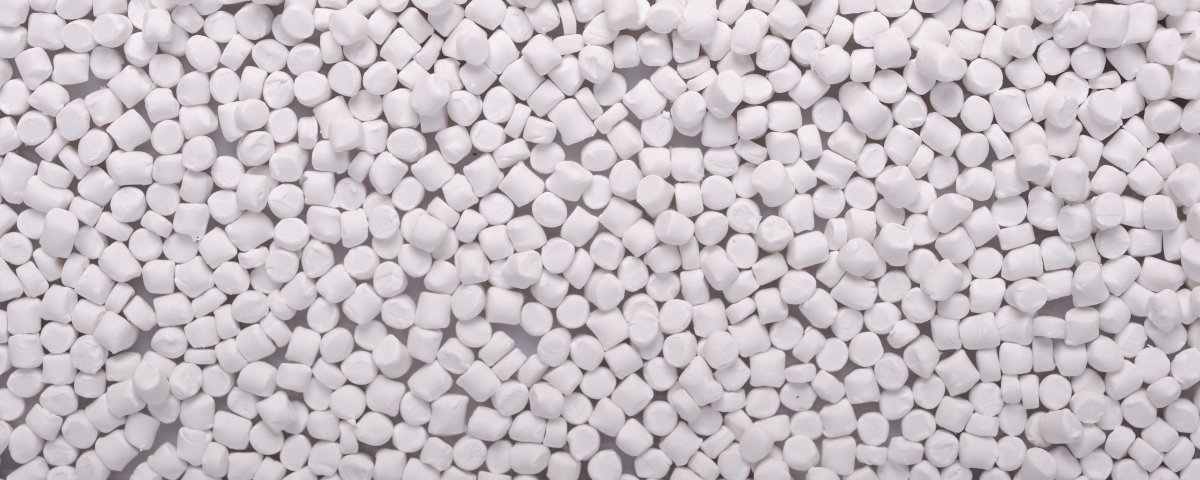Many plastics products used to filler masterbatch in process manufacturing, such as raffia, blow film, blow moulding. So, filler is not bad word in T-shirt bags, in packaging films, in pipe and sheets
At least half a dozen processors and abroad are successfully making good quality bags containing 15% to 20% CaCO3
Factors pushing fillers
Pressure from low-cost is one of the most reasons to use filler masterbatch. In-house production of CaCO3 concentrate by film processors is also expanding, though such vertical integration is limited to a few very large players. Inteplast Group in Lolita, Texas, is the largest single film and bag making plant in the world with 110 blown film extruders in a 19.5-acre plant. Inteplast puts 8% to 15% CaCO3 into T-shirt bags and industrial can liners. It uses CaCO3 concentrate made by sister company Amtopp in the same industrial complex. Amtopp is expanding its merchant compounding capacity there.
Concentrates improve
Film masterbatches contain 70% to 80% by weight CaCO3. Ingenia Polymers makes IP 1080 concentrate for film with 70% CaCO3. Ampacet upped its concentrate loading from 70% to 75% with the introduction of its 101870 grade two years ago. Bayshore’s BI-113 grade has 75%. Heritage Plastics’ Minapol concentrate has 80%, the highest in the industry
The carrier resin in concentrates is invariably LLDPE, but the choices differ. Bayshore developed its BI 113 concentrate in the late 1990s using a carrier resin with 1 to 2 MI instead of a more typical 10 to 20 MI. Omya’s tests showed that using a carrier with close to the same viscosity as the base resin in the bag–0.7 MI HDPE or 0.9 to 1.5 MI LLDPE–improves physical properties of the final product. Omya technical-service manager Michael Roussel says matching molecular weights of carrier and film resins makes it possible to use the highest filler loadings. However, Heritage Plastics uses higher-MI carrier resins to make 80%-mineral concentrate.
For bag films, the CaCO3 particle size should be 1 to 2 microns and coated with 1.0% to 1.2% stearic acid to make it hydrophobic so the mineral disperses and wets out in PE. Hilex uses a 1.3- to 1.4-micron median particle size and 6-micron top size. Heritage Bag uses a 1-micron median size and 8-micron top size.
Agricultural films and tarpaulins, which are heavier gauge, may use CaCO3 with up to 3-micron median size. Larger particles may not need surface treatment to aid wet-out, thereby cutting the cost. On the other hand, films containing larger CaCO3 particles can be scratchy. One such film failed in an application as a separator film for shipping polished aluminum sheets–the film actually scratched the sheets. CaCO3 use in agricultural films is also limited because it causes thermal degradation.
Filler masterbatch affects properties
How much calcium carbonate goes into a given bag film depends on application, resin, gauge, color, and, more than anything else, on how the bags are sold–by gauge, weight, or unit count. The increased density of filled film results in increased weight at the same bag thickness and fewer bags for a given weight. Both factors limit filler use.
CaCO3 also hurts gloss and clarity, so it isn’t good for shiny high-end merchandise bags or clear packaging. Because it adds opacity, less filler can be used in natural films than in pigmented ones. Coextrusion can add gloss to filled film.
More CaCO3 can be added to LLDPE than to HMW-HDPE and more to thicker films than thinner ones. Heritage Bag uses 14% to 20% CaCO3 in LLDPE bags and 8% to 15% CaCO3 in HMW-HDPE. Some types of LLDPE can take higher loadings than others, depending on the bag properties required. Certain combinations of base resin, blow-up ratio, and mineral loading produce higher dart impact without a loss in tensile yield strength, Heritage reports.
On the other hand, LLDPE film properties like puncture and tear resistance improve at higher loadings of CaCO3 and deteriorate at lower loadings. At 11% to 25% CaCO3, dart impact improves over neat resin, but it drops below neat resin at filler levels up to 10%, as Heritage tests show.
Saving on additives
Adding higher levels of CaCO3 to film can reduce the amount of slip and antiblock additives and colorant needed, cutting costs even more. A processor adding 20% CaCO3, for example, can reduce the slip level, depending on gauge and application. Using less slip also improves the plant atmosphere because it generates less blue haze and dust in bag making.
Blocking resistance improves so much with higher levels of CaCO3 that no antiblock may be needed at all. Octene LLDPE bags open readily with 5% or more CaCO3, Heritage says, while hexene LLDPE bags open easily with 10% CaCO3 and higher–and no antiblock.
CaCO3 is a natural whitener, so it extends and brightens pigments. With 7% to 10% CaCO3 in HDPE, TiO2 levels can be reduced by about 25%, a substantial saving for white T-shirt bags. Some pigments, however, may require higher levels when used with CaCO3. Red can liners for medical waste, for example, will turn pink with CaCO3, so they may require more red pigment or a darker red to mask the CaCO3.
Source: Plastic Technology

